It’s about Time.
By True Ventures, August 24, 2010
Ask yourself, “How did I spend my money last month?” Most of us may not have the detailed answer to that question off the top of our head, but we have bank and credit card statements that allow us to answer that question fairly accurately. Many people setup budgets and track their expenses on a monthly basis, which allows them to make better decisions on where they spend or save their money.
Now ask yourself “How did I spend my time last month?” Most of us could answer that question generally, but very few could answer with the same detail that we can with our money. Time is our most valuable asset, yet most of us don’t treat time with nearly the same respect and caution as we do our money.
Understanding how we spend our time provides us with information to make better decisions on what we do with that time.
Consider this fictional example: Jerry works at a technology company, and typically works between 8 am and 6 pm. Jerry feels like he is most productive in the early morning and late afternoon. His company has a scheduled daily meeting at 10 am that usually lasts 30 minutes. Right when Jerry feels like he is the most focused he is interrupted with an activity that, while potentially important, is not as productive for him. Jerry knows that his work time could be spent more efficiently, but doesn’t really have the detailed data to support his suspicions.
How does Jerry start to gather the details on how he spends his time?
The first thing all of the time management techniques will have you do is keep a journal of how you spend your time for some period. The exercise of journaling your time builds awareness of how you spend your time and very often this awareness alone leads to better management of your time. Journaling itself takes time and is usually only a temporary exercise, but it does give us better information on where our time is going.
Jerry starts journaling his work days and, over the period of a couple of weeks, starts to see some interesting trends. He indeed is most productive earlier in the day, but, once interrupted by the daily 10 am meeting, he finds he is not able to get back in the groove and that his productivity drops until lunch time. After eating lunch, he finds that he tends to get interrupted a lot more and finds it hard to start focusing for a few hours. Around 2:30 pm, he catches his second wind and typically works very productively until 4:30 pm. At that time, he notices that he is interrupted more and easily distracted. He flails around for another hour or so before finally calling it a day and heads home to his family.
Here is a graph of one of Jerry’s days before any changes:
Jerry brings his findings to one of the meetings and does a presentation on what he discovered for himself. During the presentation, others express a feeling that they also work in a similar pattern to Jerry. Jerry suggests that the daily meeting be moved to after lunch, when his coworkers tend to feel less productive.
After working and journaling the results over the next two weeks, Jerry makes a few additional changes. He takes steps to guard his very productive time between 8:30 and 11:30 am. He turns off his IM client, shuts down email, and passes the word around that he is trying to focus between those hours and interruptions should be kept to a minimum. Jerry also discovers that by 4:30 pm he has been more productive than he was previously working until 6 pm, so he decides to start leaving the office before 5 pm on most days.
Here is a graph of one of Jerry’s days after implementing his changes:
When we compare the productivity between the before and after change days, we see that overall Jerry is just as productive and actually spends more time in activities he identified as being very productive. He cuts down significantly on the distracting time, mainly due to leaving the office right at the end of his afternoon productivity peak before he becomes distracted.


By being aware of how he spent his time, Jerry was able to become more productive and at the same time “save” over an hour a day that he now can choose to spend doing other activities, like spending more time with his family.
Journaling how you spend your time takes a commitment, and many people fail to follow through with enough detail to see meaningful patterns in how they spend their time. Fortunately, there are a number of automated options available to help gather those details. Of course, I’m particularly biased towards RescueTime. Regardless of the tracking method you choose, I believe the time has come to give a bit more respect to our most valuable asset, Time.
This post was written by Joe Hruska, CEO & Co-Founder of RescueTime, a True Ventures Portfolio Company.

